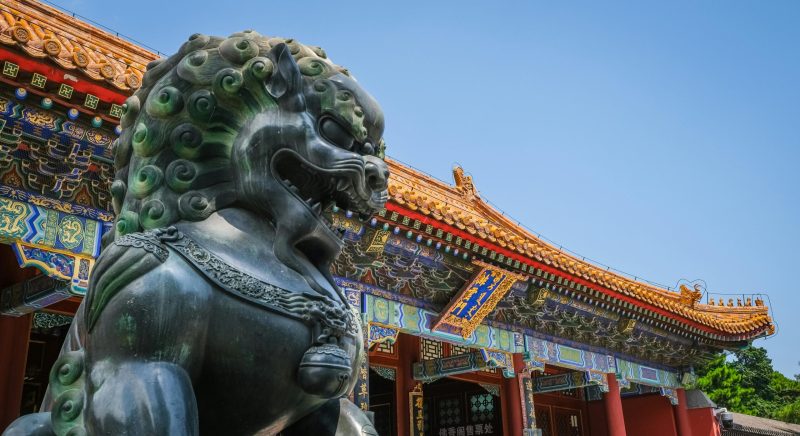For years, China’s economy was focused on short-term growth, often at the expense of addressing deeper structural flaws.
From its struggling property sector to a reliance on state-owned enterprises, the cracks in the foundation are becoming harder to ignore.
Now, with global pressures mounting and growth targets harder to meet, the country faces a defining moment.
Will Beijing continue its cycle of quick fixes, or will it confront the systemic issues that threaten its economic future?
Weak industrial output, but strong consumer
Recent data from the National Bureau of Statistics reveals a slowdown in industrial output, which grew 5.3% in October, slightly below the 5.4% recorded in September.
The pace also missed market expectations of 5.6%.
This signals weakness in manufacturing, which has long been a cornerstone of China’s economic model.
On the consumer side, there is some relief. Retail sales grew 4.8% in October, marking the fastest increase since February.
The boost was driven by the Singles’ Day shopping festival, where e-commerce sales soared by 26.6% to 1.44 trillion yuan.
The recovery in consumption reflects Beijing’s stimulus measures, but the question remains: Is it sustainable without deeper changes in income and employment?
A housing crisis with no easy fix
China’s property sector, once a key growth driver, continues to struggle.
Year-to-date property sales fell 15.8% through October, a slight improvement from September’s 17.1% drop.
However, property investment is still declining, and the sector’s troubles are spilling over into related industries, from construction to local government finance.
Local governments, heavily reliant on land sales for revenue, are drowning in debt.
These financial strains limit their ability to invest in infrastructure and public services, compounding the broader economic slowdown.
Beijing’s recent tax incentives on home and land transactions may stabilize demand, but they are unlikely to reverse the sector’s long-term decline.
Without decisive action, the property crisis risks becoming a deflationary drag on the entire economy.
Trump’s tariffs return
The external environment is also growing more hostile. Donald Trump’s re-election has revived the specter of a full-blown trade war.
Trump has proposed tariffs of up to 60% on Chinese imports, which analysts estimate could slash China’s GDP growth by over 2.5 percentage points.
For a country targeting 5% growth, this could be devastating.
Beijing is already bracing for impact. It has ramped up initiatives like the Belt and Road Initiative (BRI) and deepened ties with emerging markets.
For instance, China recently inaugurated a $3.5 billion megaport in Peru, aimed at strengthening trade links between Latin America and Asia.
These moves indicate China’s intentions to diversify its trade relationships and reduce dependence on Western markets.
Exporters feel the squeeze
China’s export sector is under pressure from domestic policy changes as well.
The government recently cut tax rebates on a range of products, including aluminium, photovoltaics, and batteries.
Aluminium exporters, who shipped 4.62 million metric tons between January and September, face rising costs that could hurt competitiveness (Shanghai Metals Market).
Exporters of solar modules may pass higher costs onto overseas buyers, but the impact on demand is expected to be limited.
For niche sectors like used cooking oil (UCO), the rebate cuts have led to shipment delays as contracts are renegotiated.
These changes highlight Beijing’s focus on retaining high-value products domestically, even at the expense of short-term export volumes.
Are fundamental issues being ignored?
For over a decade, Xi Jinping’s government has been urged to reform the economy’s structural flaws.
High youth unemployment, a rapidly aging population, and the dominance of state-owned enterprises are long-standing problems.
Yet reforms have been piecemeal at best.
China’s economic model remains highly reliant on annual GDP targets, which encourage short-term stimulus over long-term sustainability.
This year’s 5% target has driven policies aimed at propping up consumption and infrastructure investment, but these measures do little to address deeper inefficiencies.
Critics argue that Xi’s government, despite its centralized power, has yet to deliver the bold reforms needed to modernize the economy.
Tech ambitions and geopolitical risks
China’s push to lead in technology, particularly in artificial intelligence (AI) and semiconductors, is central to its future growth.
However, geopolitical tensions with the US are disrupting global supply chains.
South Korea, under American pressure, has halved its chip exports to China, while Vietnam is positioning itself as a competitor in semiconductor manufacturing.
China’s technological ambitions are both an opportunity and a vulnerability.
The country’s AI development depends on a steady supply of advanced chips, an area where US export controls are tightening.
These restrictions not only slow China’s progress but also expose the fragility of its tech sector’s reliance on global supply chains.
Growth or reform?
China is now facing a difficult dilemma: Continue prioritizing short-term growth or take the risks necessary for deep structural reforms?
Retail sales data offers a glimmer of hope, but it is not a substitute for addressing the systemic issues dragging down productivity and innovation.
The property crisis, local government debt, and an over-reliance on state enterprises are barriers to sustained growth.
Meanwhile, external threats like Trump’s tariffs and the US-China tech rivalry only adds urgency to the need for change.
Despite Xi’s consolidated power, his leadership has not yet produced significant reform breakthroughs.
With global investors increasingly wary, Xi’s ability to implement audacious reforms could define his legacy and the country’s economic trajectory.
In fact, China has the tools to reshape its economy. What remains to be seen is whether it has the political will to use them.
The post China’s crossroads: a decision that will define its economic future appeared first on Invezz


